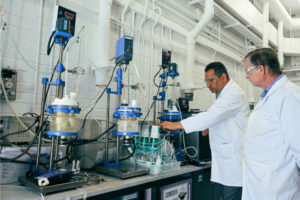I recently read a research paper from Nature.com, Comparative Acute Effects Of Mescaline, Lysergic Acid Diethylamide, And Psilocybin In A Randomized, Double-Blind, Placebo-Controlled Cross-Over Study In Healthy Participants that confirmed something I had said for years based on my personal experience. I had said that all tryptamines behave the same way in small doses, and then after more experience with various psychedelics, I said that all psychedelics in small doses behave the same way. People argued with me that they were different, but this study seems to support my claims. I’m so happy that my experience has been validated by science! This is a big step forward in the understanding of psychedelics, and it could lead to new treatments for mental health conditions. I’m excited to see what the future holds for this research.The research was designed as a randomized, double-blind, placebo-controlled, cross-over study involving 32 healthy participants aged between 25 and 44 years, comprising both men and women. Rigorous screening processes were implemented to ensure eligibility, and participants provided written informed consent. Exclusion criteria included age outside the specified range, pregnancy or breastfeeding, personal or family history of major psychiatric disorders, use of medications that could interfere with the study drugs, chronic or acute physical illness, excessive tobacco smoking, and recent illicit drug use. Participants were also required to consume alcohol within limits and have limited or no prior illicit drug use.Led by a dedicated team of researchers, this comprehensive study aimed to uncover the nuanced distinctions among several psychedelics. The investigation involved meticulous analysis of various substances, including LSD (lysergic acid diethylamide), psilocybin (found in “magic mushrooms”), DMT (N,N-Dimethyltryptamine), mescaline (derived from the peyote cactus), and ayahuasca (a brew containing DMT and other plants). To achieve this, the researchers employed a combination of subjective experiences reported by participants, objective measurements, and psychological assessments.To compare the acute effects of mescaline, LSD, and psilocybin in healthy participants, psychoactive-equivalent doses were administered. Mescaline was given in capsule form at doses of 300 mg and 500 mg. LSD was administered as an oral solution containing 100 µg of LSD base, and psilocybin was given in capsules containing 20 mg of psilocybin dihydrate. Placebo formulations were included to serve as control measures, with appearances matched to the active substances.From: Comparative acute effects of mescaline, lysergic acid diethylamide, and psilocybin in a randomized, double-blind, placebo-controlled cross-over study in healthy participantsThere is no real difference other than duration in the various classic psychedelics such as psilocybin, LSD, DMT, and Mescaline. In this groundbreaking study, the researchers aimed to compare the altered states of consciousness induced by three prominent psychedelics: 500 mg mescaline, 100 µg LSD, and 20 mg psilocybin. By examining the qualitative differences and durations of action of these substances, the study sought to contribute to the field of psychedelic research and provide valuable insights for future psychedelic-assisted therapy. One of the key findings of the study was the absence of qualitative differences in the altered states of consciousness induced by these three substances. In other words, participants did not report significant variations in the subjective experiences and perceptions between mescaline, LSD, and psilocybin. This finding suggests that, at the doses administered in the study, these psychedelics elicited similar types of experiences in terms of their qualitative nature.However, despite the absence of qualitative differences, the research did uncover relevant disparities in the durations of action of the substances. Each psychedelic displayed unique temporal profiles, with variations in the onset, peak effects, and overall duration. Mescaline, LSD, and psilocybin exhibited distinct pharmacokinetic properties, resulting in differences in how long the altered state of consciousness persisted.Understanding these differences in the durations of action is of utmost importance for both research and psychedelic-assisted therapy. Researchers conducting future studies can benefit from this knowledge to design protocols that align with the desired duration of the altered state. Furthermore, in the context of psychedelic-assisted therapy, the duration of the psychedelic experience plays a crucial role in therapy sessions and the integration of the experience afterward. The research study’s findings support the importance of dose finding in psychedelic research. By identifying the appropriate dosage range for each psychedelic, researchers can establish standardized protocols that ensure consistent and predictable effects. This is crucial for maintaining safety, as well as optimizing therapeutic outcomes. Understanding the dosage-response relationship is essential for tailoring psychedelic experiences to specific therapeutic goals and individual needs.Moreover, the findings have implications for psychedelic-assisted therapy. The establishment of dose ranges and understanding the qualitative similarities between these psychedelics can guide clinicians in selecting the appropriate psychedelic substance for specific therapeutic purposes. By recognizing the overlapping qualitative effects and considering the differences in durations of action, therapists can personalize treatment approaches based on the desired therapeutic outcomes and the unique needs of each individual. While no qualitative differences were observed, variations in the durations of action were evident. These findings underscore the importance of dose finding in research and the potential implications for psychedelic-assisted therapy. By deepening our understanding of these psychedelic substances, we can pave the way for responsible and effective utilization of psychedelics in therapeutic contexts, ultimately benefiting individuals seeking personal growth, healing, and transformative experiences.https://www.nature.com/articles/s41386-023-01607-2
Source link

Curtin University, Draslovka partner to advance glycine leaching technology
Reading Time: < 1 minute“The non-toxic amino acid has the potential to replace hazardous chemicals like cyanide in mineral

